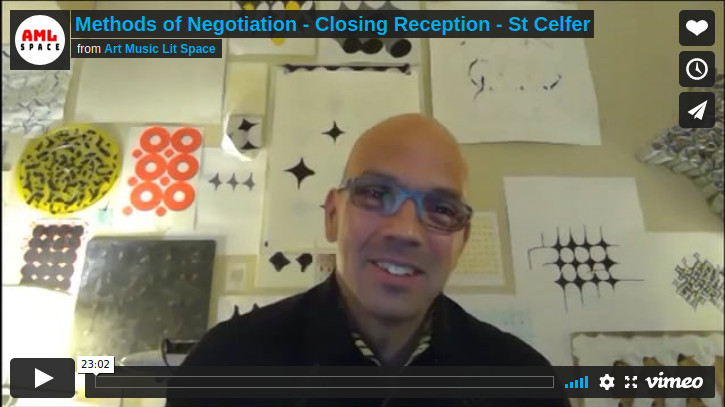St Celfer (aka John Parker) discusses his recent art and music via Zoom:

Methods of Negotiation - Closing Reception - St Celfer from Art Music Lit Space on Vimeo.
Art Music Lit Space is a post-post-internet virtual community seeking to "probe the chasm together so suddenly imposed by social distancing measures" by providing a "locus for artists, curators, writers, lookers, listeners, feelers and thinkers to show, share, and connect despite the nearly global closure of physical exhibition spaces such as studios, galleries, basements, museums, schools, art fairs, fields, etc."
The performance of St Celfer's musical piece "March of the Covids" (featured on our recent collaboration and on St Celfer's Bandcamp page) was realized (or rather, virtualized) by Art Music Lit Space as an embedded sound clip on a blog page; the Vimeo above is more in the nature of post-show documentation.
When the music was performed last week in Austin (described in an earlier post) it was displayed as a YouTube video with an abstract video component (and encoded bonus content for YouTube users), on multiple large screen monitors with speakers behind each screen.
"Post-post-internet" is a joke, of course. "Post-internet" was a brief, curator-driven quasi-movement that dealt with art-with-internet-content being shown in galleries. It was a bizarre name because of course the internet never ended and in fact most gallery activity didn't exist in people's consciousnesses until it appeared there. Covid simply takes the gallery out of the loop. Yet, as we saw in Austin, some physical spaces still exist (and in Austin they had about twenty mask-wearing visitors). Once I have documentation of people walking around the room while the video plays, I'll post it, and that will be the so-called post-internet manifestation. [Update: Some documentation of the event is here.]

